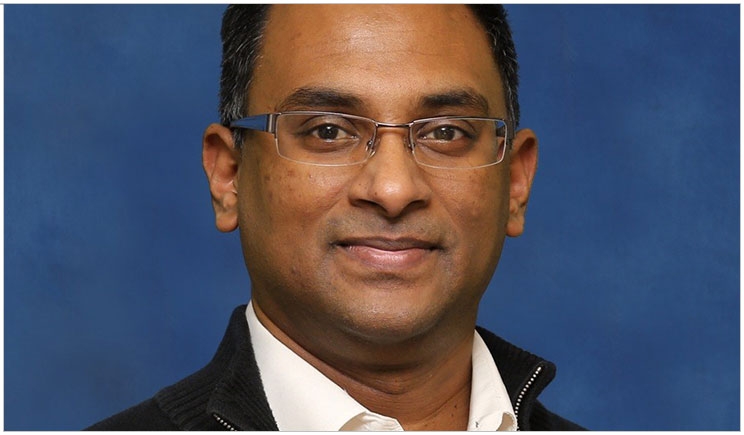
Many dentists now use lasers to cut both hard and soft tissue. But Dr. Praveen Arany at the University of Buffalo (UB) is using them to heal and even regenerate tissue. In fact, his work recently earned him the 2016 Dr. Horace Furumoto Innovations Young Investigator Award from the American Society for Laser Medicine and Surgery.
“It is a true privilege to be recognized by my peers for our work in the area of low-dose biophotonics, which has tremendous potential to transform human healthcare,” said Arany, who is an assistant professor of oral biology at UB’s School of Dental Medicine.
Very low doses of light trigger the generation of reactive oxygen species (ROS), which are chemically reactive molecules that contain oxygen. ROS can lead to aging and, possibly, cancer in large amounts. But very small amounts of ROS are necessary for functions like cell signaling and homeostasis. As amino acids sense the generation of these small amounts of ROS, the common growth factor beta is activated, producing regeneration.
“We have learned a lot about harnessing stem cells. The field appears to be poised at our ability to drive their differentiation,” said Arany. “When you direct differentiation, you get useful tissue, which is either an organ or a functional, structurally normal tissue. We find that we can do that with light.”
Arany’s research began by finding that low-level light therapy, also known as photobiomodulation, was effective in healing extraction wound sockets. Later, he and his colleagues extended their work to pulpal healing as they used light to activate the growth factor that’s naturally present in dental pulp.
“In our specific application, we were able to generate dentine from the dental pulp stem cells,” Arany said, noting that the ability to make dentine would be useful for 2 reasons.
“We would be able to use this technique in deep carious lesions close to the pulp, either indirect or direct pulp capping, and hopefully prevent the need for root canal treatment,” he said. “The other place where you would want to make dentine would be in dentine desensitization or tooth desensitization.”
Current desensitization techniques, Arany said, use an extrinsic barrier that burnishes open dental tubules or deposits heavy metal salts on them to plug them up. But these materials get abraded as patients eat and brush their teeth, binding them to a lifetime of using desensitizing toothpaste.
“So in contrast to that, if you were able to induce dentine from the inside, form an intrinsic dentinal barrier, we would be able to prevent tooth sensitivity,” Arany said. “Those are the 2 direct applications that we are in the process of hopefully converting into clinical therapy.”
These treatments wouldn’t require revolutionary new lasers, either. Many current lasers could be used in photobiomodulation simply by adjusting their wavelength and power settings.
“A lot of existing devices can be adapted with the new protocol, and they can potentially work in this space. We are actually using currently available, FDA-approved clinical devices because we want to translate quickly,” Arany said. “Nonetheless, there is a lot of opportunity, depending on the process you want to use the laser for, to develop new devices as well.”
Arany aims to encourage the development of these techniques as president of the North American Association for Photobiomodulation Therapy, which is dedicated to the use of low-dose biophotonic treatments. The association brings together researchers, physicians, dentists, physical therapists, veterinarians, and even acupuncturists who are interested in applying these technologies and techniques to a variety of cases.
“Phototonics have come center-stage for many applications. But there are many other exciting applications with light per se, including optical imaging. There’s a lot of interest in digital dentistry and CAD/CAM imaging. There is even more excitement about pre-cancer screening and pre-carious lesions treatment with light-based diagnostics,” Arany said.
“There are many other applications for light that I think will be recognized in the next few decades,” Arany said. “You’ll have light being a major tool, just like your handpieces.”
Related Articles
NIDCR Grants Launch Tissue Regeneration Centers
Root Regeneration May Depend on Proteins
Stem Cells Investigated for Enamel Growth











